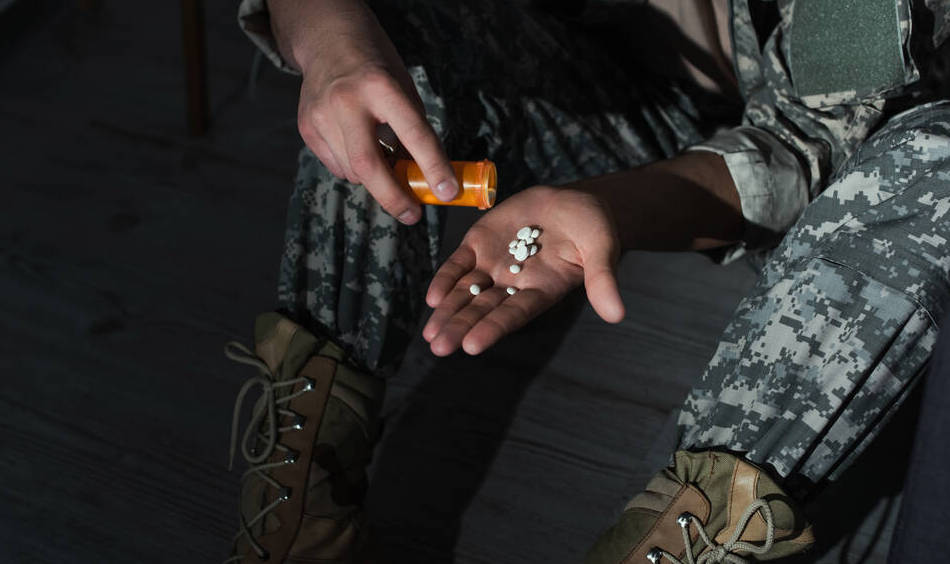877 total views
Last Updated on 06/09/2025 by James Anderson
Introduction: Why the Military Turned to Modafinil
Modern warfare pushes soldiers to their physical and mental limits. Missions often last days, with minimal opportunities for rest. Sleep deprivation impairs decision-making, reaction times, and morale, all of which can determine life or death outcomes. To mitigate these challenges, militaries worldwide began exploring Modafinil, a drug designed not to overstimulate but to promote wakefulness and cognitive clarity.
Unlike traditional stimulants such as caffeine or amphetamines, Modafinil offers smoother energy levels, fewer crashes, and less risk of dependence. This makes it a powerful tool for pilots, special forces, and frontline troops who must remain vigilant during prolonged operations.
What is Modafinil? A Quick Overview
Medical Origins of Modafinil
Modafinil originated in France in the late 1970s, derived from a compound called adrafinil. Initially, it was used to treat narcolepsy, sleep apnea, and other sleep disorders. By the early 1990s, it gained regulatory approval in Europe and North America, making it an attractive candidate for military testing.
Key Mechanisms of Action
Unlike amphetamines, Modafinil doesn’t flood the brain with dopamine. Instead, it modulates neurotransmitters such as histamine, orexin, and glutamate, enhancing wakefulness without causing jitteriness or hyperactivity. This makes it safer for soldiers, who need clarity under pressure rather than erratic bursts of energy.
History of Modafinil in Military Applications
Early Adoption in the French Foreign Legion
France’s Foreign Legion was one of the first to test Modafinil on troops during long marches and extended missions. Soldiers reported better mental focus, reduced fatigue, and greater stamina, even under limited sleep conditions.
U.S. Air Force and “Go Pills”
For decades, American pilots relied on amphetamines known as “go pills.” However, concerns over side effects and dependency led to Modafinil replacing them in certain contexts. Studies showed that pilots using Modafinil could maintain peak performance during 40-hour missions with minimal impairment.
NATO and International Use
Several NATO allies, including Canada and the U.K., have evaluated Modafinil in training and simulated combat environments. Its adoption highlights a global recognition of its advantages over older stimulants, particularly for extended military operations.
Benefits of Modafinil for Soldiers
Enhancing Wakefulness and Combat Readiness
The most significant benefit of Modafinil is its ability to keep soldiers awake without sacrificing alertness. In high-pressure scenarios, even a few hours of sleep deprivation can reduce reaction times. Modafinil extends operational readiness, allowing soldiers to stay sharp during long missions.
Cognitive Improvements Under Stress
Stress can impair judgment, memory, and situational awareness. Modafinil has been shown to improve executive function, decision-making, and working memory, making it valuable for commanders and field operatives. Soldiers under Modafinil often report feeling more capable of processing information quickly and calmly.
Physical Endurance and Reduced Fatigue
While Modafinil is not a physical performance enhancer like steroids, its impact on fatigue indirectly boosts endurance. Soldiers on long patrols or high-intensity missions can push further with less perceived exertion, enabling longer sustained activity.
Modafinil vs. Traditional Stimulants
Comparison with Amphetamines
Amphetamines, once the gold standard for military alertness, often caused side effects such as anxiety, tremors, and aggression. By contrast, Modafinil provides steady energy without the emotional volatility. Pilots using Modafinil were found to have fewer communication errors compared to those using amphetamines.
Safety Profile and Side Effects
Modafinil is generally well-tolerated, with mild side effects such as headaches or nausea. Importantly, it carries lower risks of addiction and cardiovascular strain than amphetamines. This safety profile makes it more acceptable for prolonged military use.
Long-Term Implications
The long-term effects of Modafinil are still under study. While short-term safety is well established, questions remain about how chronic use may impact cognitive health, particularly in younger soldiers exposed to it over extended deployments.
Ethical and Legal Considerations in Military Use
Voluntary vs. Mandatory Administration
One of the biggest debates is whether soldiers should be compelled to take Modafinil. While it offers undeniable operational advantages, concerns about autonomy and informed consent remain. Some militaries allow voluntary use, while others issue it as part of mission readiness protocols.
International Military Policies
Different nations have different stances. The U.S. military regulates Modafinil under strict medical supervision, while some European forces use it sparingly. International laws also raise questions about whether cognitive enhancers could violate human rights if used without consent.
Research Studies and Real-World Case Reports
U.S. Army Studies on Sleep Deprivation
Research conducted by the U.S. Army found that soldiers deprived of sleep for 64 hours could still perform complex tasks effectively when given Modafinil. Reaction times and cognitive accuracy remained high compared to placebo groups.
French and Canadian Forces Case Studies
In simulated combat missions, both French and Canadian forces reported higher endurance, improved teamwork, and sustained focus under Modafinil. These studies reinforced its reputation as a safer, more effective alternative to older stimulants.
Potential Risks and Criticisms
Dependence and Misuse
While less addictive than amphetamines, Modafinil still carries the risk of psychological dependence. Soldiers might over-rely on it, leading to neglect of natural sleep cycles.
Unknown Long-Term Cognitive Effects
Because military use is relatively new, data on long-term brain impacts is limited. Some researchers warn that continuous reliance on Modafinil could alter natural neurochemical balances.
Ethical Dilemmas
Critics argue that widespread Modafinil use could create a performance arms race, where soldiers feel pressured to take enhancers to remain competitive. This raises significant ethical concerns about fairness and consent.
FAQ
1: Is Modafinil legal in the military?
Yes, in many countries it is authorized under medical supervision, particularly for pilots and special operations.
2: Does Modafinil replace sleep?
No. It helps maintain alertness temporarily but does not substitute the restorative functions of sleep.
3: Are there side effects for soldiers?
Most side effects are mild, such as headaches or nausea, but misuse can increase risks.
4: How does Modafinil compare to coffee or energy drinks?
Unlike caffeine, Modafinil provides smoother alertness without jitters or crashes.
5: Can soldiers refuse to take Modafinil?
Policies vary. Some militaries allow refusal, while others integrate it into mission protocols.
6: Is Modafinil addictive?
It has a much lower risk of addiction compared to amphetamines, but psychological dependence is possible.
Conclusion: The Future of Modafinil in Defense Operations
Modafinil has already reshaped how modern militaries approach performance optimization. From enhancing cognitive clarity to extending endurance, it offers distinct advantages over traditional stimulants. Yet, ethical, legal, and medical questions remain, particularly regarding long-term use and consent.
As research continues, Modafinil may become a standard tool in defense operations, not as a replacement for sleep, but as a strategic enhancer for missions where human endurance is pushed beyond natural limits.
For further information on military medicine and performance enhancement, you can consult U.S. Department of Defense medical research.
‼️ Disclaimer: The information provided in this article about modafinil is intended for informational purposes only and is not a substitute for professional medical consultation or recommendations. The author of the article are not responsible for any errors, omissions, or actions based on the information provided.
References:
- U.S. Food and Drug Administration. PROVIGIL. U.S. Department of Health and Human Services. https://www.accessdata.fda.gov/drugsatfda_docs/label/2015/020717s037s038lbl.pdf . 2015
- Ballon JS, Feifel D. A systematic review of modafinil: potential clinical uses and mechanisms of action. J Clin Psychiatry. 2006
- Willavize, S. A., Nichols, A. I., & Lee, J. Population pharmacokinetic modeling of armodafinil and its major metabolites. https://doi.org/10.1002/jcph.800 . 2016
- Gilleen, J., Michalopoulou, P. G., Reichenberg, A., Drake, R., Wykes, T., Lewis, S. W., & Kapur, S. Modafinil combined with cognitive training is associated with improved learning in healthy volunteers a randomised controlled trial. European Neuropsychopharmacology. 529–539. https://doi.org/10.1016/j.euroneuro.2014.01.001 . 2014
- McClellan, K. J., & Spencer, C. M. Modafinil: A review of its pharmacology and clinical efficacy in the management of narcolepsy. CNS Drugs, 311–324. https://doi.org/10.2165/00023210-199809040-00006 . 1998.
- Greenblatt, K., Adams, N. Modafinil. StatPearls Publishing. https://www.ncbi.nlm.nih.gov/books/NBK531476/ . 2025
- Oliva Ramirez A, Keenan A, Kalau O, Worthington E, Cohen L, Singh S. Prevalence and burden of multiple sclerosis-related fatigue: a systematic literature review. https://doi.org/10.1186/s12883-021-02396-1 . 2021.
- Ciancio A, Moretti MC, Natale A, Rodolico A, Signorelli MS, Petralia A. Personality Traits and Fatigue in Multiple Sclerosis: A Narrative Review. Journal of Clinical Medicine. https://doi.org/10.3390/jcm12134518 . 2023
- Mereu, M., Bonci, A., Newman, A. H., & Tanda, G. The neurobiology of modafinil as an enhancer of cognitive performance and a potential treatment for substance use disorders. https://doi.org/10.1007/s00213-013-3232-4 . 2013
- Natsch, A. What makes us smell: The biochemistry of body odour and the design of new deodorant ingredients. CHIMIA International Journal for Chemistry. https://doi.org/10.2533/chimia.2015.414 . 2015
- Hamada, K., Haruyama, S., Yamaguchi, T., Yamamoto, K., Hiromasa, K., Yoshioka, M., Nishio, D., & Nakamura, M. What determines human body odour? Experimental Dermatology. https://doi.org/10.1111/exd.12380 . 2014


